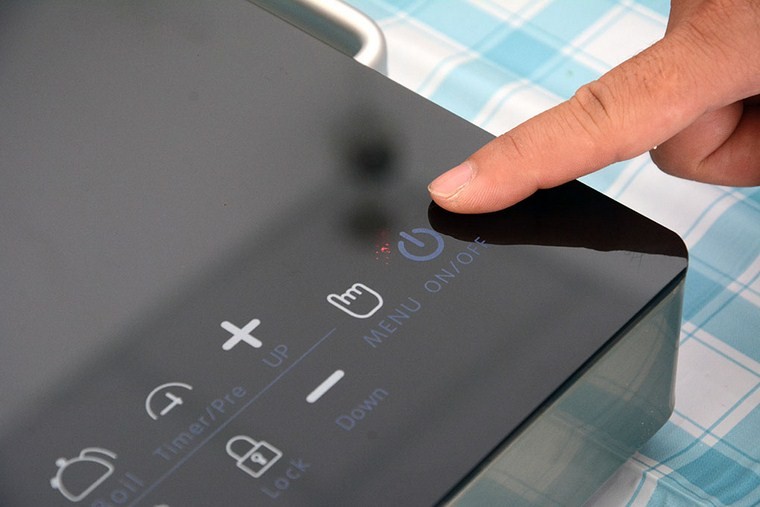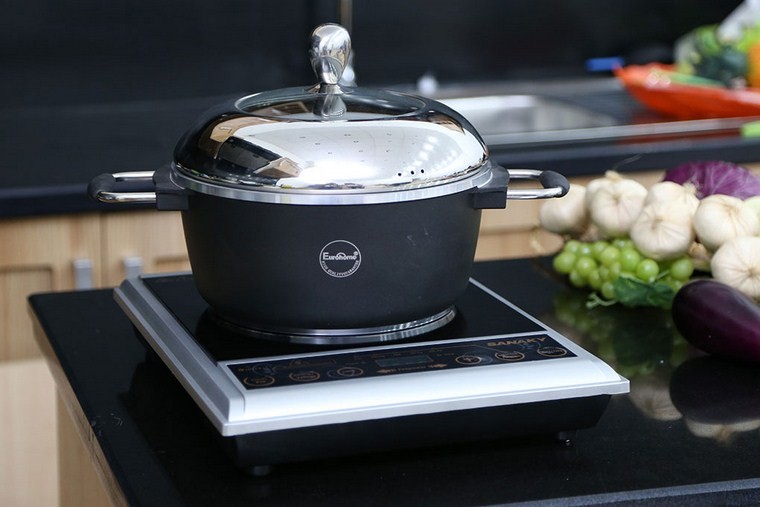The most commonly deficient nutrients in the diet

Diet is important to our health. Yet most of our meals are lacking in these six important nutrients.
Nowadays, infrared cookers are widely used because of their ease of use, hygiene and safety. However, not everyone knows how to use infrared cookers properly to ensure safety and save electricity. Below are some tips from Quantrimang, please refer to them.
Do not turn off the stove when changing the cooking pot.

If you want to change pots while cooking, you should only reduce the heat to the lowest level, absolutely do not turn off the stove. When you turn off the stove and restart it, the stove will need a large current to operate again, so it will be very power consuming. After changing pots, you just need to gradually increase the temperature to the required level and continue cooking.
Turn off the stove a few minutes before the food is cooked.
With an infrared cooker, even if it is turned off, it will still work for a few minutes. Therefore, when the food is just cooked, you can turn off the power but still leave the pot on the stove. At this time, the remaining heat emitted from the stove will cook the food completely. However, this method should only be applied to stewed and stir-fried foods, not fried foods.
Choose the right pot

Infrared cookers are compatible with most types of pots, pans, and pans, but you should choose the type with a thick bottom and good heat transfer ability such as cast iron, stainless steel, etc. to save cooking time and energy consumption effectively.
Avoid high temperature settings
High temperatures help food cook faster and in less time, however, this also means consuming more electricity and the amount of electricity wasted also increases due to the heat radiating to the outside. Therefore, you should only choose the average temperature when cooking to save on wasted electricity.
Adjust the temperature gradually
While cooking, you should not rush to increase the temperature immediately, it will waste electricity and affect the life of the infrared stove. To use the infrared stove properly, you should adjust the temperature every 2-3 minutes, so that the heat is released slowly, evenly, and saves electricity.
Diet is important to our health. Yet most of our meals are lacking in these six important nutrients.
At first glance, AirPods look just like any other true wireless earbuds. But that all changed when a few little-known features were discovered.
In this article, we will guide you how to regain access to your hard drive when it fails. Let's follow along!
Dental floss is a common tool for cleaning teeth, however, not everyone knows how to use it properly. Below are instructions on how to use dental floss to clean teeth effectively.
Building muscle takes time and the right training, but its something anyone can do. Heres how to build muscle, according to experts.
In addition to regular exercise and not smoking, diet is one of the best ways to protect your heart. Here are the best diets for heart health.
The third trimester is often the most difficult time to sleep during pregnancy. Here are some ways to treat insomnia in the third trimester.
There are many ways to lose weight without changing anything in your diet. Here are some scientifically proven automatic weight loss or calorie-burning methods that anyone can use.
Apple has introduced iOS 26 – a major update with a brand new frosted glass design, smarter experiences, and improvements to familiar apps.
Yoga can provide many health benefits, including better sleep. Because yoga can be relaxing and restorative, its a great way to beat insomnia after a busy day.
The flower of the other shore is a unique flower, carrying many unique meanings. So what is the flower of the other shore, is the flower of the other shore real, what is the meaning and legend of the flower of the other shore?
Craving for snacks but afraid of gaining weight? Dont worry, lets explore together many types of weight loss snacks that are high in fiber, low in calories without making you try to starve yourself.
Prioritizing a consistent sleep schedule and evening routine can help improve the quality of your sleep. Heres what you need to know to stop tossing and turning at night.
Adding a printer to Windows 10 is simple, although the process for wired devices will be different than for wireless devices.
You want to have a beautiful, shiny, healthy nail quickly. The simple tips for beautiful nails below will be useful for you.













